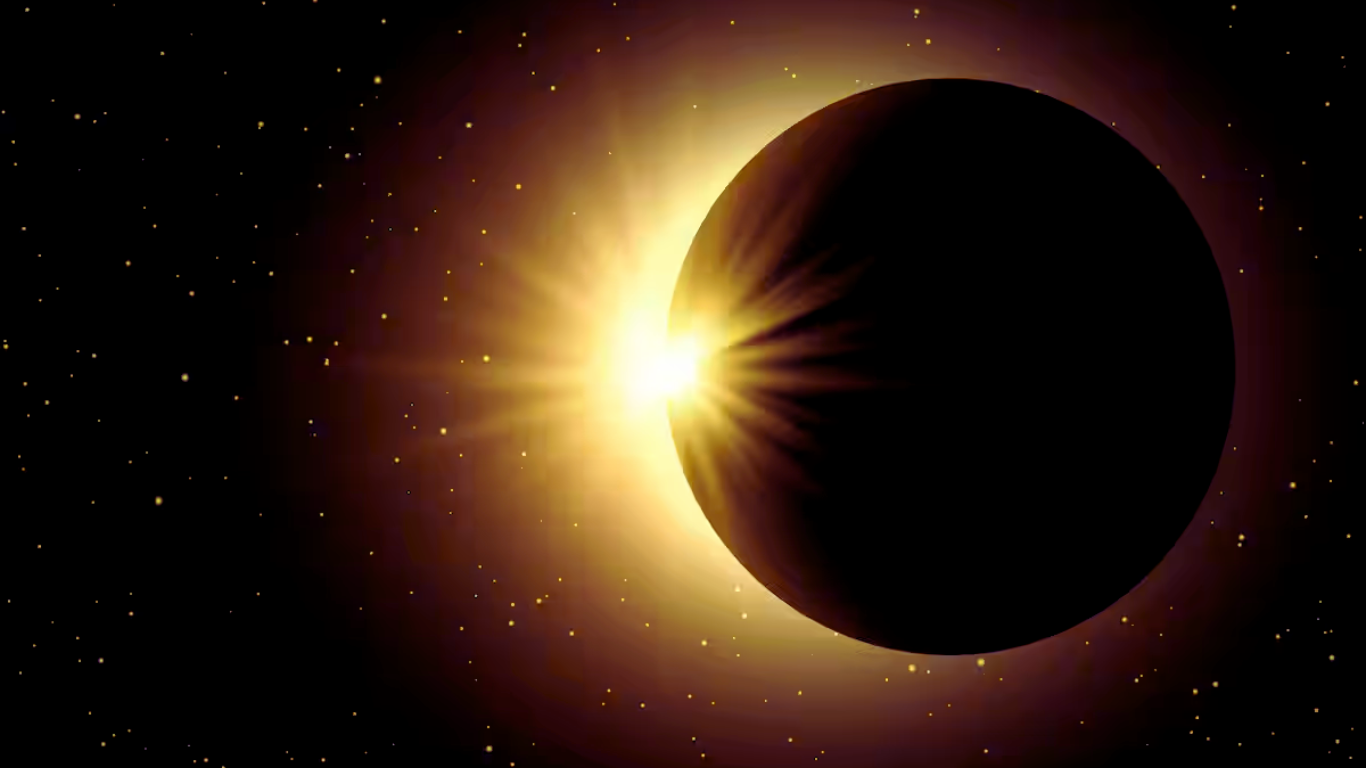Sky gazers are gearing up for one of the most significant celestial events 2024 – the total Solar Eclipse on April 8. A total solar eclipse occurs when the Moon comes closer to Earth than usual and aligns directly between the Earth and the Sun, blocking sunlight and casting a shadow on the Earth’s surface. This eclipse is poised to traverse North America, passing over Mexico, the United States, and Canada.
Scientists and experts anticipate that this rare occurrence will lead to several unusual phenomena, including disturbances on Earth and changes in animal behavior. “When darkness envelops the landscape during a total solar eclipse, peculiar events begin to unfold,” noted NASA in a recent press release.
Solar Eclipse 2024: What Might Happen:
1. Radio Waves
According to NASA, solar eclipses can induce disruptions in the structure and behavior of Earth’s upper atmosphere. Given that the ionosphere comprises charged particles such as ions and electrons, and plays a crucial role in reflecting and bending radio waves, alterations in the ionosphere can consequently impact radio communications and navigation systems.
“Disruptions within this layer may result in challenges with GPS and communication,” stated Kelly Korreck, NASA’s eclipse program manager at headquarters.
2. Weather Change
In the midst of a total eclipse, temperatures may rapidly decrease by several degrees, and wind patterns may alter direction unexpectedly. A study from 2016 revealed that any form of eclipse can prompt a change in wind direction.
“When sunlight diminishes during twilight, we typically observe a cooling effect. This phenomenon also occurs during the temporary dimming of a total solar eclipse,” clarified NASA. Additionally, the eclipse may potentially trigger thunderstorm activity.
3. Animal Behaviours
In past instances, peculiar animal actions have been observed during eclipses: Giraffes have been observed galloping, while roosters and crickets may begin crowing and chirping.
“Deceived by the artificial twilight, birds cease their singing, crickets commence chirping, and bees retreat to their hives,” remarked NASA. Furthermore, humans may also experience emotional effects from these occurrences.
4. Silence
The abrupt darkness can prompt numerous birds and animals to become silent. Angela Speck, a professor of physics and astronomy at the University of Texas at San Antonio, explained to ABC News that birds tend to gather in flocks roughly 20 minutes before totality, while others will grow quieter. Farm animals, including cows and chickens, will instinctively retreat to the barn, mistaking the darkness for nighttime. Bees similarly cease buzzing during totality and head back to their hives.
5. Stars in afternoon
As the moon transitions the day into night, the darkness will unveil the stars and several planets in the sky. During the eclipse, Venus and Jupiter will be particularly visible, positioned in close proximity to the sun on April 8.
6. Diamond Ring
When observing the eclipse with proper eye protection, observers may witness a crescent of light along the moon’s edge that appears as if studded with beads, resembling a necklace. This occurrence, referred to as “Baily’s beads,” occurs due to sunlight interacting with the moon’s uneven surface.
Where Will The Eclipse Be Visible?
Sadly the solar eclipse will not be visible in India, a partial eclipse can be witnessed in Colombia, Spain, Venezuela, Ireland, Portal, Iceland, the United Kingdom and some Caribbean countries.

















